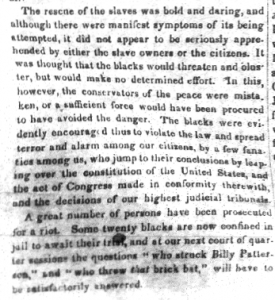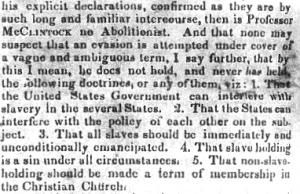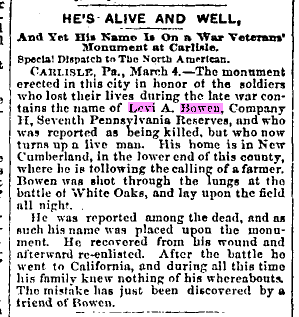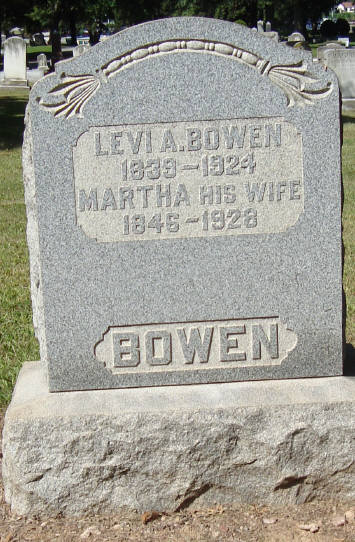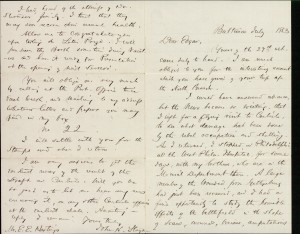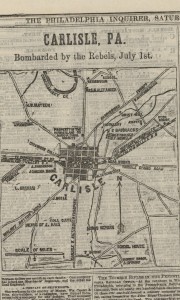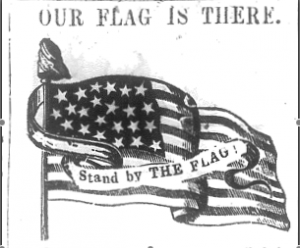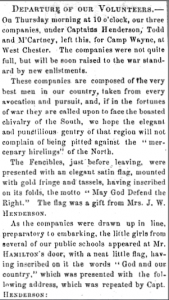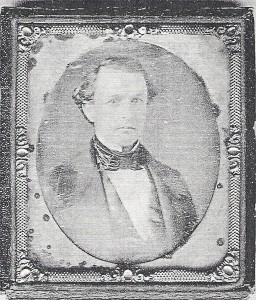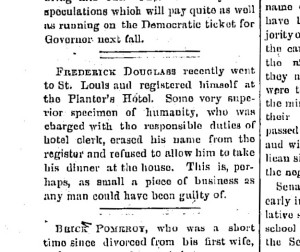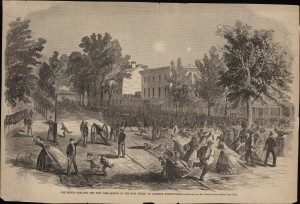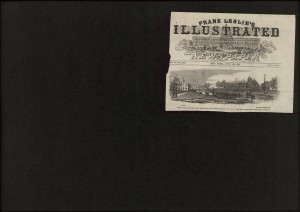I wanted to find how the Carlisle area newspapers reported the riots and where, if any their position was on the incident. I found two Carlisle newspapers on microfilm at the Dickinson Library: the American Volunteer and the Carlisle Herald. I looked at the Dickinson’s Reel 8 of Carlisle Newspapers which consisted of the American Volunteer from June 3, 1847 – April 29, 1852 in Carlisle, PA. The first instance of the riots I found was in the June 10, 1847 edition in an article titled “Alarming Riot”. Within the article it mentions the trial that occurred on June 2nd and the riot that followed it. However, unlike many of the other sources I have looked at, there is no mention of Prof. McClintock at all. The paper credits Judge Hepburn as realizing the mistake on the part of Justice Smith for issuing any paperwork that gave possession back to the slave-owners. Up until this point, John McClintock had been the only party that had recognized the mistake and attempted to fix it, causing a riot in the process. This account blames the riot completely on the black citizens who surrounded the courthouse. There is even an account of a black man attempting the light the building on fire, which was not mentioned anywhere either. Not only is there no mention of John McClintock, the paper states that they do not believe that any citizen of Carlisle had anything to do with starting the riot. This is a marked change from the attitudes of the townspeople I have come across thus far.
In terms of the position of the paper, phrases like “we deeply regret” and “disgraceful proceedings” repeatedly refer to the riot, which suggests a sense of embarrassment on the part of the town.
On June 17, 1847, a small article appeared in the American Volunteer announcing that the black man who had been reported to be attempting to light the courthouse on fire had been arrested in the town of Columbia in Lancaster County. His name was Boon with an alias of Buck.
The next reference to the riots in the American Volunteer is immediately following the death of Mr. Kennedy who was the injured slave owner. The article, entitled “Death of Mr. Kennedy”, appeared on July 1, 1847 and proclaimed how sorry the paper was for his family. The paper announced an outrage at the events that unfolded and led to this death. There is a clear rejection of the recent law that did not allow southerners to come into Pennsylvania to retrieve their slaves. The paper states that with the addition of the new law, Pennsylvania will become a home for any slave looking to run away, which is presented as a negative idea.
What might be the most interesting of the articles published in the American Volunteer that I found is the reprinting of an address that Dickinson College President Robert Emory gave to the board of trustees regarding Prof. McClintock. Within the speech that was given on July 8th and reprinted on July 17, 1847, he assures everyone that Prof. McClintock is not an abolitionist. In fact, he lists five radical abolitionist ideas that he claims Prof. McClintock does not believe in. They include feeling the United States government should intervene with slavery in southern states; the belief that states should interfere which each other; the belief that all slaves should be free; the belief that holding slaves is a sin; and finally the belief that to be in the Christian Church, you should not hold slaves.

